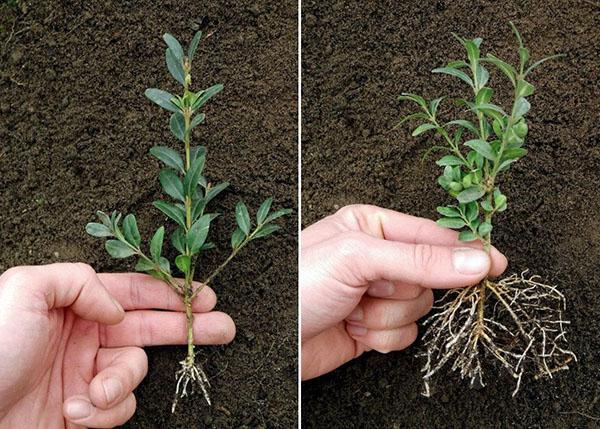We propagate boxwood by cuttings
 Boxwood is an ornamental perennial shrub. Many landscape designers use it when creating a hedge. The evergreen shrub tolerates shearing well and can therefore be given any shape. Boxwood is propagated by semi-lignified cuttings. The survival rate of boxwood cuttings ranges from 80% to 100%. Boxwood cuttings can be carried out twice a year: before the onset of frost and in the summer. From when you cut the boxwood, its further growth rate depends. Consider the nuances of autumn and summer cuttings.
Boxwood is an ornamental perennial shrub. Many landscape designers use it when creating a hedge. The evergreen shrub tolerates shearing well and can therefore be given any shape. Boxwood is propagated by semi-lignified cuttings. The survival rate of boxwood cuttings ranges from 80% to 100%. Boxwood cuttings can be carried out twice a year: before the onset of frost and in the summer. From when you cut the boxwood, its further growth rate depends. Consider the nuances of autumn and summer cuttings.
Autumn cuttings
Autumn cuttings of boxwood are carried out from August 25 to September 15. Boxwood cuttings are still green at this time, but sap flow has already stopped at the base of branches and shoots. Some cuttings already have a brown bark at this time. These cuttings are best suited for breeding boxwood. To harvest cuttings, you need to choose a long basal shoot of the bush. As a rule, such shoots do not stand out from the total mass of branches after shearing the boxwood, so you need to peel back several shoots. Cut the root shoot into cuttings. This is done with a garden shears or a sharp knife. Each cutting should have two side shoots.
When harvesting cuttings, make oblique cuts on the shoots. This will help the boxwood root system develop faster. Root fall boxwood cuttings in pots and place in a warm place.
Any soil can be used to root the cuttings. The main thing is that the pot has drainage holes. If you plant autumn cuttings in open ground without a root system, they will not survive frost.
Rooted cuttings can be planted outdoors in spring. Such seedlings, after planting in open ground, will begin to develop very quickly, but young plants need frequent watering.
Summer cuttings
In summer, boxwood cuttings can be planted directly into open ground. A lot of sunlight in summer is good for the formation of new shoots. Cuttings are harvested in the same way as in autumn, but watering is reduced in summer. Instead, they bring under the cuttings nitrogen fertilizers and mulch.
Before planting in open ground, the deciduous crown of the cuttings is cut, leaving only the upper leaves. After pruning in this way, most of the nutrients will be used up for root development.